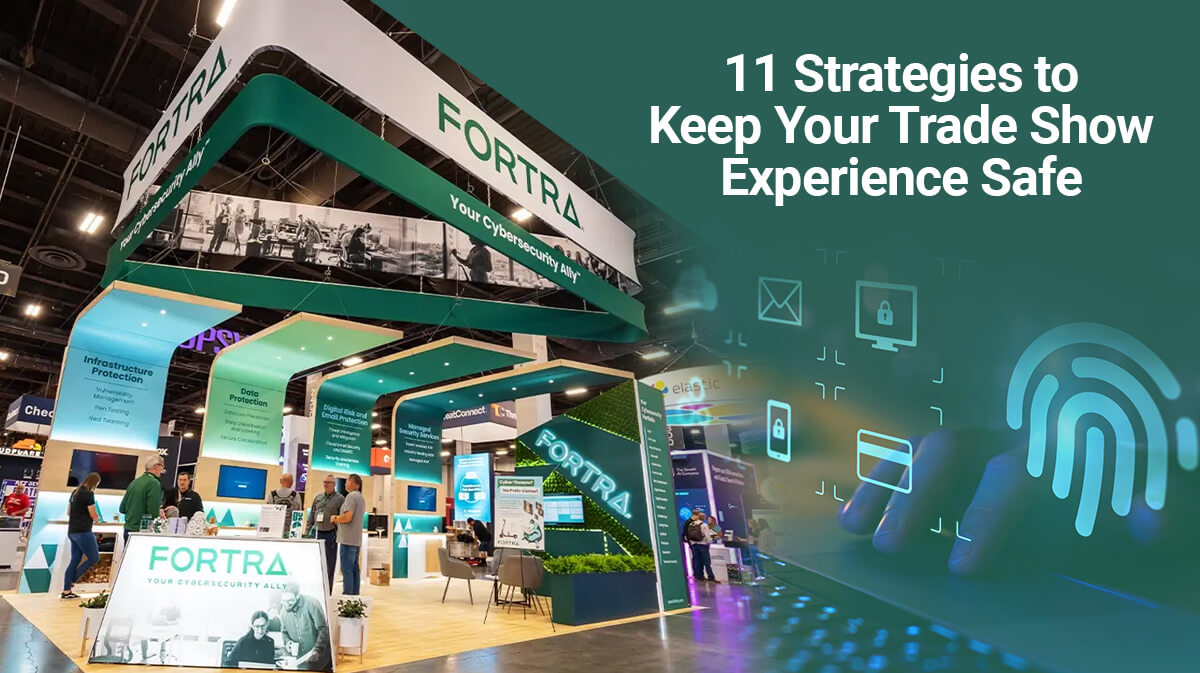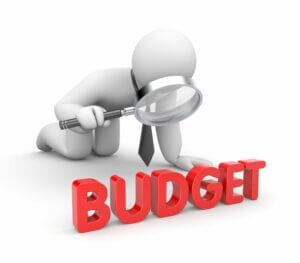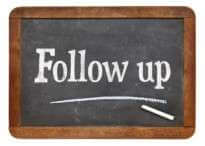
10 Game-Changing Tips for Your First Trade Show
There are few better ways for businesses to keep in touch with their target audience than by attending trade shows. Participating in the right trade shows can do wonders in building a database of contacts, both of possible clients and partners. It also allows you to see what other companies in your industry are up to and explore the latest in technology and design.
But planning for your very first trade show can be an understandably tall task. We’re here to make it as easy as possible for you to not only get everything right but also to put your best foot forward in front of competitors and prospective customers. Below are 10 expert tips that will make you look like a pro exhibitor from the beginning of your journey:
 1. Decide Your Goal
1. Decide Your Goal
Participating in a trade show without knowing what your goals are is like creating an ad without knowing what you want to sell – completely useless.
The first and most indispensable task you need to complete when brainstorming for ways to find success at your first event is to define your objectives.
What are you trying to achieve via your participation? The main thing to remember is that everything you do at the show must lend value to your sales and marketing goals. Are you here to build awareness, generate leads, reinforce your partnerships, or something else entirely?
Make sure you have at least one or two clear goals. Don’t try to realize too many different things at the same time because this could overburden your sales team as well as create confusion when it comes to every decision you make after.
Also, ensure that the goals you set are realistic and attainable. If you have unrealistic expectations, it will result in unnecessary cost and effort and leave you feeling disappointed at the end when you are unable to reach the targets you have set.
 2. Target the Right People
2. Target the Right People
Once you’ve outlined your goals, you need to decide which target audience you should be attracting to best achieve them.
Most trade shows will have a wide range of people visiting. Make yourself aware of exactly who has been invited as well as what the visitor list could possibly look like.
Then figure out from the above information who you would really like to impress. Refer to the objectives you’ve set to help inform your decision here.
Build a profile of the person you think would be an ideal visitor. Ensure that all your marketing material is created to specifically target this key demographic and that your sales team is instructed on exactly the kind of people they need to be talking to.
A clear idea of your target audience ensures that everything you do at the show yields the right results.
 3. Budgeting is Key
3. Budgeting is Key
Budgeting for any marketing plan is always demanding, but this is even truer when it comes to trade shows. A detailed budget can be the difference between a smooth, cost-effective exhibit and a costly, unprofitable exercise.
A simple tip when creating a budget is to expect to spend at least three times the cost of your stall space on marketing, personnel, and actually constructing your booth.
Also ensure there is room for flexibility, because as the show progresses, you may realize you need to spend more to attract a certain audience on the basis of the footfall you’ve been seeing.
Finally, have an itemized cost breakdown for every single item at the show so you know where the money is being spent.
This breakdown will allow you to evaluate which costs yielded results and which did not, thus giving you a chance to make your next show more cost-effective.
4. Space – the First Frontier
The first decision you have to make once all the essentials we mentioned above are in place is where to set up your exhibit. Ask yourself some simple questions to decide the best space for you.
Do you want to attract visitors as soon as they enter or after they’ve seen the competition?
Do you want to set up next to big names to make sure you get more footfall, or will you be lost among them?
What is the traffic pattern at the event? Where are the entrances and exits?
The answers to these questions will help you determine the most ideal location for your stall. Ensuring you get a space that best suits your needs is essential to making your trade show participation a success.
5. Desirable Design
The design of your exhibit can make or break your trade show performance. It should have key points of interest to invite the right people and spaces assigned for sales leads and displays.
All of this depends again on the goals you have set, which is why we can’t stress enough on the importance of that first step.
Do you need more space to display products and host demonstrations?
Do you prefer having more meeting areas for a relaxed conversation, or simple table-tops for your sales team?
Do you need to keep large spaces for branding?
If the design is not your forte, there are professional trade show display companies like Exponents that can design, build, and deliver your entire exhibit based on the requirements you have.
This frees you up to focus on matters where you possess greater knowledge while giving your booth the transformative touch of an expert.
6. Technology Turning Points
In today’s era of Insta-stories and Facebook videos, people are more comfortable interacting with technology than with other people.
This means integrating technology artfully into your booth could bring in those who would otherwise be uncomfortable starting a conversation directly with your sales team.
An interesting way to use technology is to have interactive screens around your booth.
This engages visitors and provides an opportunity for you to talk to them without having to hire extra personnel. You could also have attention-grabbing videos playing on a loop.
This ensures that more people enter your space and keeps them involved in a significant portion of the time.
 7. Lead Generation
7. Lead Generation
As mentioned, the biggest advantage of a tradeshow is the building of a database. Collecting business cards is a great way to keep track of the people who visit your booth. Make sure your sales team is aware of this and collects cards from visitors.
Secondly, it is important that at the end of every day, you create a detailed list of the people who visited. You can categorize them based on whether they could be business partners, suppliers, or customers.
If possible, have your team members note down any additional information they gathered during their interaction with the visitor. This way, when you get in touch again, you can leave a favorable second impression.
8. Promote Your Position
Promotions both before and at the event can be a great way to lure more traffic to your booth. Before the event, contact all the right people either in or around the area of the show.
This helps create a buzz even before the event starts and could let potential customers who were unaware or not already on the visitor list know what is happening.
At the event itself, have a member of your sales team handing out fliers with a short write-up about you and directions to your stall.
If the organizers allow and your budget permits, then look into putting up well-designed posters around the exhibition area.
Is it possible to put floor stickers with branding on it that leads to your stall? Anything you can do to promote yourself can only help ensure greater footfall.
9.  Follow Up on Your Leads
Follow Up on Your Leads
Once you have established yourself in the minds of people who visited your stall, it’s crucial to keep in touch if you hope to convert this short-lived exchange into a lasting relationship.
In order to do that, you should follow up on the leads you have generated as quickly as possible. Show visitors that you valued the time they spent in your exhibit and that you are eager to start working with or for them.
Use any additional information your sales team was able to gather at the show to impress them with your knowledge of who they are and what they do.
Ideally, follow-ups should occur within a month of the show as people may not remember who you are or have forgotten any promises or decisions made during the event. So don’t procrastinate and get the phone calls rolling right away!
10. Review, Learn, Repeat
If you have followed all our tips up to this point, this last part should be fairly easy. Review every single aspect of the show you participated in.
Did you achieve your goals? Was the money invested worth the return? Did you even see any returns? It is perfectly normal not to for first-time exhibitors. Did you get the kind of football you expected? Were you able to attract the right kind of visitors?
Once you’ve conducted a detailed study of your performance, you can analyze where you succeeded, where you fell short, and possibly what to do to ensure an even better outcome at your next show.
Now that you have the tools you need to make sure your first trade show is a success, all you’ve got to do is rent the perfect booth from Exponents, one of the most experienced trade show display companies in the US, and have a hassle-free event. Good luck!

